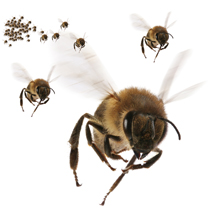How much is that black swan in the window?

Photo: Spacedustdesign at flickr, CC Attribution No Derivatives Work 2.0 Generic
Asked to reflect on how I got it wrong ten years ago, my first thought was to go back to my youthful certainty thirty years ago. Back then Jimmy Carter was US president, and my radical friends and I were sure that he was so far to the right the country couldn’t possibly go any further. There was no way Ronald Reagan could possibly be elected president! We figured Carter would coast to re-election, and then some kind of social democratic quasi-left, probably green, would challenge the Democrat/Republican duopoly in 1984… We got that seriously wrong.
We started Processed World magazine in 1981 and imagined we’d be part of an upheaval of workers at the point of circulation. Bank workers, office temps, claims processors, secretaries and programmers would somehow concur that the work we all did was utterly pointless and self-defeating, and through widespread tactics of disinformation and disruptive sabotage, help scuttle the capitalist system. Wrong again.
Chastened by misdiagnosing the rightward march of US politics, never anticipating the collapse of the USSR or anything big that happened in the past quarter century, I stopped prognosticating long before ten years ago. Still, I went to Seattle for the WTO protests, pretty sure it wouldn’t amount to much, and got that wrong. Afterwards I went to Washington DC for the 2000 IMF/World Bank protests, but didn’t expect it to be too effective – and got that right! I didn’t have high hopes for the new anti- or alter-globalisation movement, even if I was a cautious participant and supporter.
I never expected 9/11 – but when it happened, I wasn’t surprised, and not nearly as horrified as most people I knew. Immediately, I recalled a novel by Harvey Swados, Standing Fast, which follows an ultra-left group (loosely based on CLR James and Raya Dunayevskaya’s Johnson-Forest Tendency) from some internecine struggles in 1934 all the way to 1963, when JFK is assassinated. One of its most compelling themes is the function of war in disrupting and dispersing social networks that have become crucial backbones of struggle. When the US entered World War II, a great number of people were in active unions, parties, groupuscules; the war had the effect of taking all those social groups and throwing them in the air like confetti. When they fell to the ground everyone was in a new place: having to start all over again, but on new terrain (geographically, politically and psychologically).
Similarly, in 2001 there was a great deal of ferment globally. Though ‘another world is possible’ was far from a coherent political agenda, it was gathering steam before being temporarily derailed by the recharged imperial belligerence of a wounded beast.
In 2009 global climate change is happening apace, and the Big Crisis of capitalism is here, but it’s not here either. Can capitalism muddle along for another year, another century? It’s easy to say the sky is falling (it probably is), but we can’t know the future. We especially cannot know the efficacy of our own behaviors, our own choices. Without certainty of ‘success’, we still have to engage. History is ours to make, one day, one year, one generation at a time.
Chris Carlsson is a San Francisco-based writer and activist. His most recent book is Nowtopia: How Pirate Programmers, Outlaw Bicyclists, and Vacant-lot Gardeners are Inventing the Future Today. www.chriscarlsson.com
This article is part of the t-10 series from Issue 5 of Turbulence asking, ‘What were you wrong about 10 years ago?‘.


